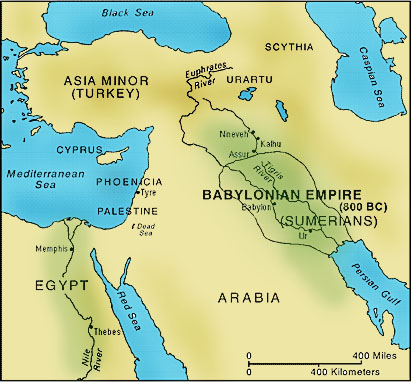

Department of History
University of California, Irvine
Instructor: Dr. Barbara J. Becker
![]()
Lecture 1. Celestial Seasons.
![]()
Knowing the Sky |
|
A Legend of the Salteaux People |
|
| An old man was asked, "What moon is it."
He replied "Midwinter Moon." "No, you're wrong. This is Eagle Moon. Look! There is an eagle now passing behind you." When the old man turned to look, his throat was cut. The murderer remarked, "Did you expect to see an eagle at this season?" |

|
| The old man was familiar with the patterns and signs his tribe used to mark the passage of seasons. He knew the time. Nevertheless, a fatal twinge of doubt led him to look away in search of verification, and he fell victim to a cunning distractor. The moral of the tale is simple: Always be certain what time it is. How do you "know" the time of day or year? |
Celestial Routines |
Much of the early history of astronomy is the story of humans' quest to identify and master the patterns and rhythms of the sky's denizens in order to know the time. If you have lived most of your life in a place that floods the night sky with artificial illumination, it is likely that you have seldom -- if ever -- seen the faint natural light of the celestial bodies our ancestors relied upon to mark the passage of time. Just as modern lighting has erased the stars from the night sky, the advent of standardized civil clocks and calendars has effectively erased our collective memory of the sky's intimate role in defining time's natural structure. It will be helpful to begin by reacquainting you with some of the principal classes of celestial bodies and their basic motions. __________
|
 |
Leaving the shutter of a camera open for several minutes captures the trails of the fixed stars as they make their daily counter-clockwise trip around the north polar axis. The star in the center with the smallest trail is Polaris, an otherwise average-looking star that happens to be situated almost directly above the earth's axis of rotation. (Global positioning hint: If you're ever lost somewhere in the northern hemisphere, locate Polaris and measure its angular height above your horizon to find your latitude.) |
|
|
| The constellation Orion (the Hunter) appears every year in the night sky from November to April. A closely spaced trio of stars (center) form a line that represents his belt. Four bright stars form a large rectangular box around the "belt" and mark Orion's shoulders and knees. The bright star, Sirius (center left) is part of the constellation Canis Major, Orion's trusty hunting dog that always follows close on his master heels. |  |
|
|
|
|
When the Moon is "new," it rises with the sun and is out all day long. Even so, we usually cannot see it because it is positioned too near to the Sun in the bright daytime sky. It also has its dark side pointing our way, so it reflects little light to us. To get our first glimpse of the returning Moon, we have to look for a thin sliver of light low on the western horizon just after sunset a day or two after new moon. Every night, the Moon sets about one hour later than the night before. And every night, more and more of its surface is illuminated. Roughly two weeks after New Moon, it is rising at sunset and setting at sunrise. Its entire surface is covered with light. Over the next two weeks, the Moon's lit surface shrinks until it is only a sliver that can be seen on the eastern horizon shortly before sunrise. |
 |
~ 1 day |
||
 |
~ 3 days |
|||
 |
~ 7 days |
|||
 |
~ 14 days |
|||
 |
~ 21 days |
|||
 |
~ 25 days |
|
||
 |
||
| <---North |
|
South--->
|
As this montage of photographs shows, sunrise occurs at different points along the horizon during the year. In fact, the Sun only rises due east on two days of the year: the first day of spring (vernal equinox, ~ March 21) and the first day of fall (autumnal equinox, ~ September 21). In the center of the montage, you can see the Sun rising (between the two silos) on the vernal equinox. After the vernal equinox, the Sun's rising point inches northward a little each day (toward the left in the photo). Around June 21 (summer solstice), the Sun stops its northward march and begins to retrace its steps. On the left, you can see it rising on the summer solstice, several degrees north of east. The Sun will rise due east a few months later in September and then begin to inch southward at sunrise (toward the right in the photo). On the right, you can see the Sun rising on the morning of the winter solstice (~ December 21). Some early observers likened the Sun's annual zigzag along the horizon to the action of a weaver. |
||
|
||

| <--East |
West-->
|
| The illustration shows the planet Mars moving across the starry sky from October 1994 to September 1995. If you watch Mars regularly over many months, you will find that every night it usually appears to be located a little farther east than it was the night before. But periodically -- at roughly two year intervals -- Mars stops its eastward motion and begins backtracking. This westward motion is called "retrograde" motion. During these episodes, Mars not only changes its direction, but it gets noticeably brighter. After a couple months, it ends its retrograde motion and starts heading east again. | |
Celestial Surprises |

Halley's comet (684) as illustrated in the Nuremberg
Chronicles, 1493.
Comets were believed to portend important events.
The Bayeux tapestry (1073-1083) shows men (on left) pointing to a comet
(Halley's, 1066) sent to foretell the fall of King Harold of England at the Battle of Hastings.
In his painting, The Adoration of the Magi (1303-1306),
Giotto di Bondone depicts the Star of Bethlehem as a comet (Halley's, 1301).
Different comet types -- including those shaped like swords --
illustrated in Description de l'univers, 1683.
Comet Hale-Bopp, 1997. |

The spectacular 1833 Leonid meteor shower as
depicted by the Dakota Sioux.
The 1833 Leonid meteor shower depicted by Europeans.
The 2001 Leonid meteor shower.
|

The solar eclipse of 1869 as depicted by the
Dakota Sioux.
The 1869 solar eclipse depicted by solar astronomer,
Charles Young of Princeton University.
Solar eclipse, April 14, 1992.
|
Ancient Astronomers? |

The midwinter sunrise illuminates a decorated stone
at the end of the narrow 80 ft passageway built into a man-made mound.
Entrance to Newgrange. Midwinter sunrise light
enters the upper opening, or roofbox.
Interior passageway at Newgrange.
Sunlight shining through the roofbox at Newgrange.

Some who have studied the arrangement of standing stones
at Stonehenge have suggested it was built and used to predict important
celestial alignments: eclipses, solstices, and lunar standstills. Many others disagree.

At sunset in midwinter, sunlight enters a narrow passage at Maes Howe and illuminates the back wall. Seen from inside the tunnel opening, the setting midwinter Sun appears to blink on and off as it passes behind an irregular ridge of distant mountains. The effect is like watching multiple sunsets on one day. Midsummer moonset can also be viewed from this vantage point. Given what we know today about the heavens, the importance we assign to certain celestial phenomena, and the particular celestial events to which we devote special time and attention, it is natural for us to look at these ancient monuments and imagine how WE would have used them. Archaeoastronomers have to exercise a great deal of caution when "decoding" prehistoric structures like Maes Howe or Stonehenge. The people who built them are no longer available to tell us why they created the site the way they did, what purpose they hoped it would serve, or how it actually worked out in practice. They left no written record of their plans or intentions. Are the special celestial alignments that we see in these monuments today part of the builders' original plan, or are they simply coincidental? How can we be sure? |
Early Sky Watchers -- The Babylonians |

The Babylonian Empire at the end of the 9th c BCE. |
| Babylonian astronomy was an activity conducted by an elite, literate class. The records they kept served the bureaucratic demands of the state. Of particular importance were the creation and maintenance of the official calendar, and predicting events -- both celestial and terrestrial. |
A cuneiform letter about a lunar eclipse written to King Ashurbanipal in the 7th c BCE. |
|||||||
|
___________
Babylonian tablet giving instructions on how to adjust the calendar to keep in sync with the seasons.

Ziggurat (Ur, Iraq; 2000 BCE). The ziggurats of ancient Babylon may have provided premier viewpoints for specialists in celestial observation, but they also seem to have served as temples. This ziggurat at Ur was devoted to the moon god, Nanna-Sin, and contained living quarters for priests. |
|